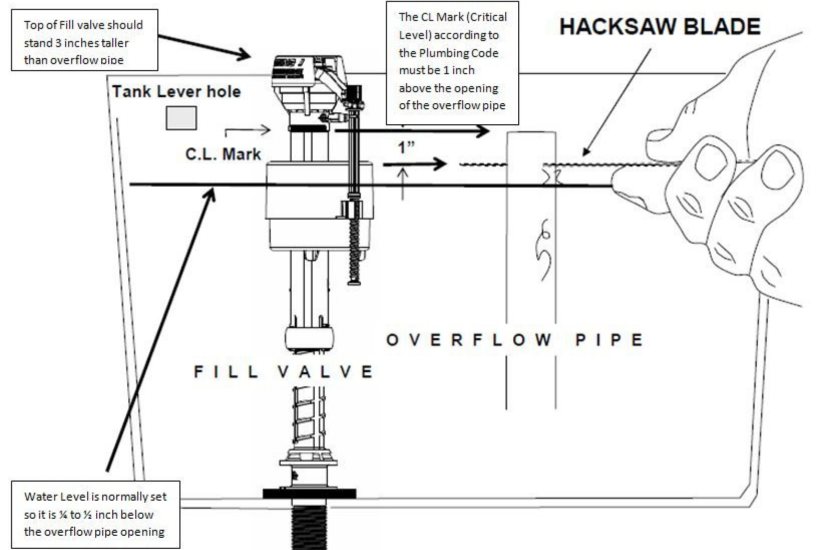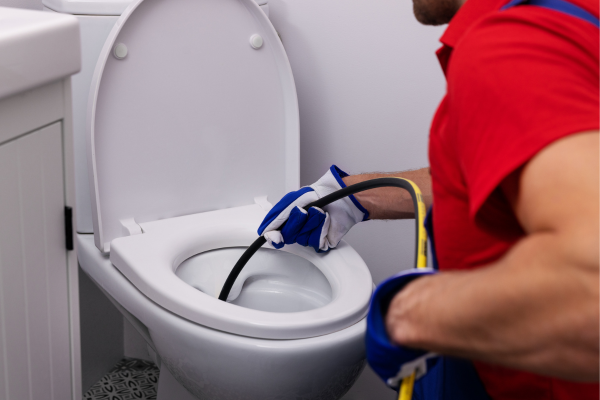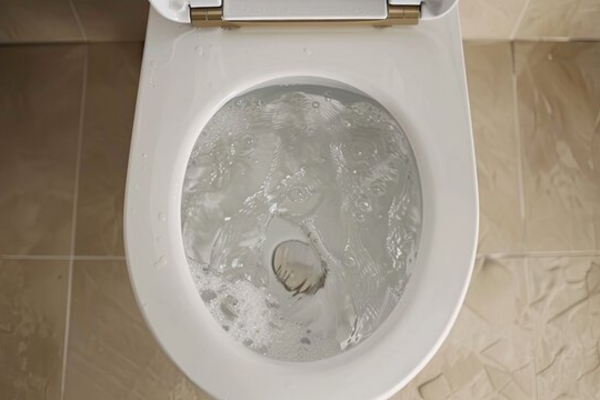Understanding the reasons why toilets overflow will be important in maintaining a functional and safe home. Overflooding toilets are more than an inconvenience; they can cause severe water damage and costly repairs, aside from sanitation issues that may arise. In such scenarios, where there is an overflow of the toilet, it may spill contaminated water into the environment, hence increasing bacterial spread and structural damage to the floors, walls, and baseboards. Furthermore, regular overflows may signal larger plumbing issues, which could become much more extensive in repairs if left unaddressed.
Early overflow prevention and detection will help the homeowner stay away from hazards and ensure the plumbing system is in good order within the home. Tri-State Ready Restoration professionals in water damage restoration provide immediate responses to minimize damages involving overflows. Tri-State keeps homes safe from costly water damage by taking a proactive approach to being prepared for immediate response.
How Toilets Work: A Brief Overview
Knowledge of the simple components making up the toilet system and their interaction with one another helps in better understanding the cause of overflow. A simple toilet is generally composed of its major parts: the bowl, tank, fill valve, and drainpipe. The bowl is where water and waste are stored, and the tank holds water in preparation for being released during a flush. It controls the amount of water flowing into the tank, refills after every flush, and directs all the waste and water from home through the drainpipe.
Each of these components plays a crucial role in preventing overflow. For example, the fill valve controls the water level inside the tank and the bowl; it also can cause problems if damaged because the filling is unregulated and most times leads to overflow. Obstruction or blockage of the drainpipe, for its part, can block the path of waste to exit; this also often causes back-up of water because, again, it would not let waste flow continuously, hence overflow. Being aware of these components and what they do allows the homeowner to identify signs that indicate the beginning of an overflow problem and rectify it with relative ease.
Primary Causes of Overflowing Toilets

Clogs within the Drainpipe
The most common causes of a toilet overflowing include blockages in the drainpipe; these are usually caused by too much toilet paper or objects that cannot go into a toilet, such as hygiene products or items and foreign objects like children’s toys that block the free flow of water and waste downstream of a clogged drainpipe. A blockage in this pipe produces several telling symptoms. These include gurgling sounds right after the flushing of a toilet, water draining slowly, or the need to repeatedly flush the toilet. The main signs of an obstruction in the drain pipe include gurgling sounds after flushing, the slow draining of water, or the need to repeatedly flush the toilet.
Clogged Vent Pipes
Other major causes of overflowing toilets are clogged vent pipes. The vent pipes allow air to enter the plumbing system, a necessary process that helps in a smooth drainage process. When such a pipe gets clogged-mostly because of the collection of leaves and debris, or even animal nests-wastewater does not flow properly, causing clogs and slow drains. Recurring clogs and slow water flow are symptoms that indicate that the vent pipe could be blocked.
Septic Tank Problems
Septic tank issues might be a root cause of the toilet overflow, especially for the homes comprising a septic system. When the septic tank becomes full and cannot store more wastewater, it backs up through your household pipes and out the toilets. The signs that this problem is present will comprise foul odors across your home, backup throughout multi-plumbing fixtures, and pooling water near the septic tank.
Faulty Fill Valve
Another common cause of overflow in toilets is a faulty fill valve. The fill valve regulates refilling water into the tank following each use. If that valve just so happens to be faulty, or even just not adjusted right, then it will be continually filling the tank when it’s already full-an overflow. Homeowners can easily check for this themselves by listening for continuous running water after flushing or examining the water level in the tank.
Poor Plumbing Installation
The poorly installed pipes or fixtures can result in frequent overflows. This happens either in an old home or when one goes for a DIY remodeling. The misaligned pipes, insufficient slopes, or poorly installed drain lines can hamper the smooth flow of water, thereby enhancing the chances of toilet overflow. In such scenarios, correction in the installation of plumbing becomes imperative to avoid the occurrence of recurrent overflow and consequent water damages.
Warning Signs of an Imminent Overflow
Accurate and timely detection of the warning signs can help prevent a full toilet overflow. The following are some of the things a homeowner should look out for:
- Water Level in the Bowl Is Rising: When water in the toilet bowl rises near to, or actually reaches, the top after a flush, chances are that something is clogged or blocking it.
- The Plunger Needs to Be Applied Often: The plunger being applied almost every single time the toilet is flushed points to one thing-the existence of some kind of drainage problem that could eventually lead to overflow.
- Backup of Multiple Toilets: When multiple toilets or drains back up at the same time in the house, this could be indicative of a larger plumbing problem or an issue with the septic.
Visual cues such as these allow homeowners to take preventative steps that could avoid the formation of overflow causes and further damage and repairs with water.
Prevention Tips to Avoid Toilet Overflow
Be Cognizant of What You Flush
The most convenient way of preventing toilet overflows is simply by being aware of what goes down into the drain. It is important to flush the toilet only with the contents of toilet paper and human waste, since hygiene products, wipes, and paper towels may cause a potential clog in the pipes that makes the water overflow. A gentle reminder to the family and guests that proper use of the trash for things not meant for flushing can help minimize blockages by a great deal.
Regular Checks
It is oftentimes early warning signs of an imminent overflow issue that can be spotted with regular maintenance checks. Water levels in the toilet bowl and tank should be observed. Both of these should return to normal after a flush. Also, the fill valve, flapper, and flush mechanism should be inspected every so often to help prevent malfunction incidents that could lead to overflow.
Septic System Service-Schedule
For a house that is on a septic, regular inspection and pumping is the best way to avoid backup issues. With a full septic tank or in the process of backing up, there is a risk of sewer water backing into the plumbing of your home. A septic tank that is full or backing up can lead to sewer water backing into the plumbing in your home. These are good reasons to have your septic tank inspected and pumped every 3-5 years-or whenever recommended by the professional, to help avoid overflows caused by septic problems.
Invest in Quality Plumbing Fixtures
High-quality plumbing fixtures, such as reliable fill valves and flappers, reduce the likelihood of a malfunction. Pieces well-made are more likely to last longer and act with increased consistency, reducing the chances of an accidental overflow. More on the positive note, quality investments save in the future by reducing needs for repairs and minimizing overflow risks.
What to Do in Case of a Toilet Overflow: Immediate Steps

Step 1: Shut off the Water Supply
First things first: in the case of a toilet overflow, the water supply should be turned off immediately. Locate the shut-off valve, usually found on the wall or floor just behind the toilet near its base, and give it a clockwise turn; this cuts off the water supply. Such promptness avoids further overflow and confines the water to an easier level of containment.
Step 2: Siphon Extra Water
Turn off the water first; then, non-aggressively mop as much excess as possible to prevent more damage. Towels, a mop, or wet/dry vacuum are handy for soaking up the standing water off the floor. The sooner this water is taken out, the lesser the damage to the flooring and fixtures around.
Step 3: Use a Plunger or Drain Snake
If the water drains immediately, use the plunger to try and dislodge the blockage. Simply place the plunger over the drain, seal it off fairly well, and then push down hard a few times in an attempt to push the clog loose. If the clog does not go, you might have to snake the drain with a drain snake-actually more correctly with a plumber’s auger-to dig deeper into the pipe for removal of the obstruction.
Step 4: Call a Professional if Needed
If the overflow continues beyond control, or if it is a clog too deeply set that you cannot remove, it would be better to call a professional plumber or water damage specialist. Persistent overflow could point to some other and more major plumbing issue that requires special tools and expertise. Tri-State Ready Restoration provides professional water damage services in terms of emergency assistance in water overflows to mitigate the problem from causing further damage.
How Tri-State Ready Restoration Can Help with Toilet Overflows
Professional water damage restoration is definitely called for when one is dealing with the effects an overflowed toilet can leave behind. Tri-State Ready Restoration offers water damage specific to the particular overflow incident. With 24/7 emergency response, this team at Tri-State can promptly evaluate the damage, extract water, and sanitize affected areas to focus on getting your property back to its original state. From minor overflows to major water damage, Tri-State’s expert services help ensure that the recovery is both safe and efficient.
Take action now that overflows can be avoided in the future. Preventing toilet overflows requires taking proactive steps through maintenance and timely responses to warning signals of a toilet overflow. Homeowners can prevent many of the major inconveniences and costs associated with overflow incidents by paying more attention to the things flushed down the drain, routine maintenance, and investing in good quality plumbing fixtures. If you have water damage due to overflow issues and would like some assistance, then Tri-State Ready Restoration is ready to serve you. For professional water damage services, contact Tri-State today for a prompt response that can help protect your home and keep it safe.
FAQ’s on Toilet Overflow and their causes
How to Stop Toilet Overflow?
In the event of a toilet overflow, proceed behind the toilet and locate on the wall the shut-off valve; turn it appropriately clockwise. If it needs plunging, an attempt to remove obstruction of the blockage may be performed.
Why Is My Toilet Overflowing?
This may be due to clogged drainage, blocked vent pipes, septic problems, or malfunctioning of the fill valve. You shall, therefore, be left to identify exactly what makes your toilet overflow to ensure it does not recur.
How to Replace Toilet Overflow Tube?
Turn the water supply off and drain the water inside the tank. Remove the old overflow tube from the tank and replace it with a new one, setting it correctly. Reassemble other parts and check the flush.
Toilet Overflow When Flushed: What do I do?
If after flushing the toilet there is an overflow then either the drainpipe or vent pipe is clogged. In most of the cases, cleaning the blockage solves the problem.
Can a Toilet Overflow Without Being Clogged?
Yes, there are overflows in a toilet even when it is not clogged. Faulty fill valve or blocked vent pipe can be some of the reasons for overflow if no main visible obstruction occurs.
How to Prevent Toilet Overflow
Only flush the toilet paper, have your septic maintained on a timely basis, conduct regular checks, and use only good quality plumbing parts so that the risks are at a minimum.
Is Toilet Overflow Covered by Homeowners Insurance?
Depending on the policy and depending on the situation, homeowners’ insurance may or may not cover toilet overflows. In general, overflow due to sudden-type accidents is covered, while damages due to gradual reasons are not.
Will a Toilet Overflow If Clogged?
Yes, clogging is among the top common causes of overflows. Blockages will not allow water to drain properly and thus make it rise and spill out.
Where Does Toilet Overflow Water Go?
In most cases, the water of such an overflowing toilet starts spilling all over the floor around the toilet. If this overflow is not stopped or kept in control, it starts seeping into the flooring and walls, causing destruction.
Will a Toilet Overflow If It Keeps Running?
Yes, a constantly running toilet, due to either an ill-functioning fill valve or an ill-functioning flapper, will cause an overflow from continuous filling of the tank and spilling over into the bowl.

